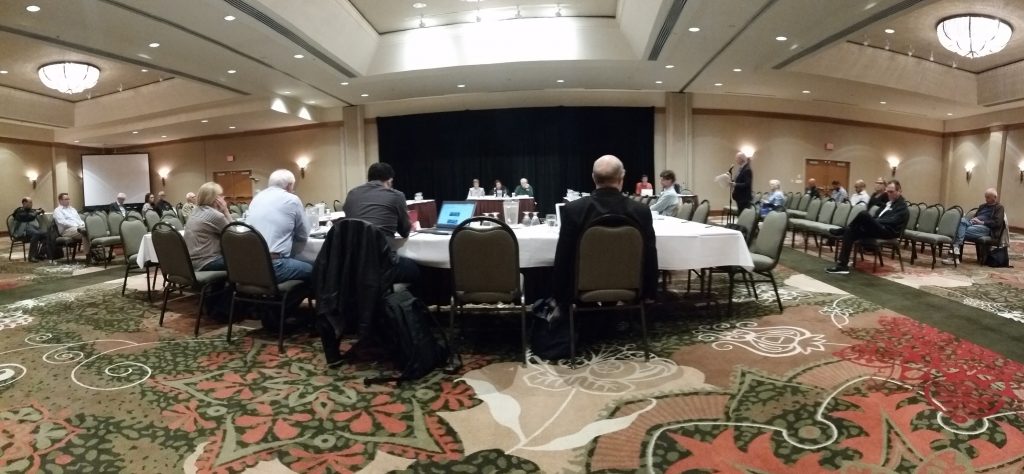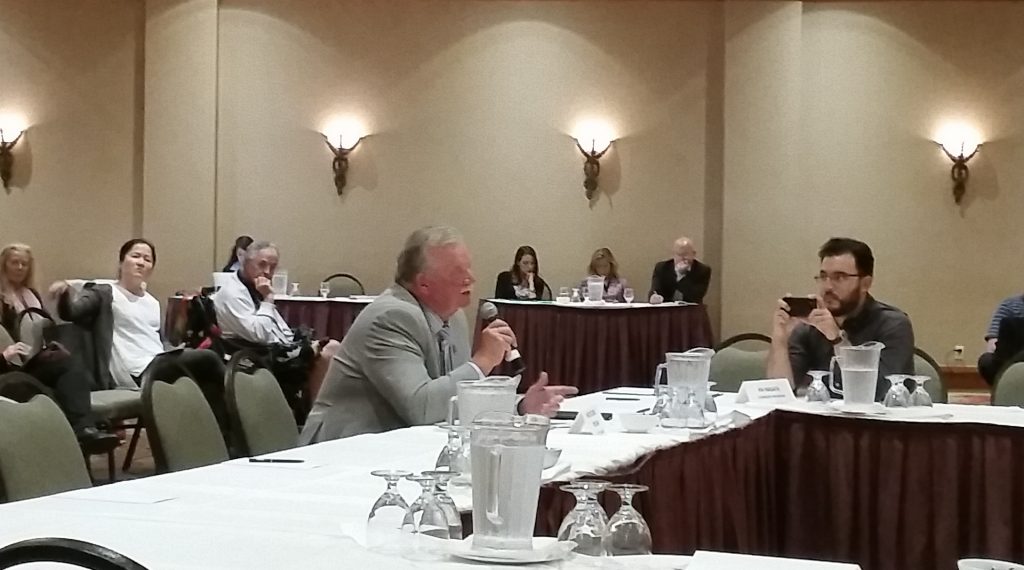It’s been three days of UBCM 2016, and I hardly have time to write my thoughts. Somehow, Langley City Councillor Nathan Pachal has pumped out several really great blog posts about the talks he has been to. I see him at every event, and have shared food and drink with him, (we are conspiring together on something…), so I have no idea where he finds the time, but it is worth while reading if you want to get a different view of some of the talks. Actually Nathan’s Blog is good reading any day, he is a smart guy.
So back to me, and that weird existential angst I was expressing around climate change last post. It has not abated, as I have attended talks on other subjects, and have had some scheduled face time with a few Ministers and Members of the Opposition, but I was also given the gift of inspiration.
After climate change, the biggest issue facing BC right now is housing, at every level.
During the Large Cities Forum, we had presentations on the remarkably progressive approach that Maple Ridge took when trying to address a long-standing tent city issue. There was much discussion of the social aspect of this type of homelessness, and the importance of giving people franchise over their space, and building trusting relationships between the residents of the tent City and the people trying to keep the tent City safe, and hopefully move people to a more tenable living situation. They had people who had been living outside for a decade or longer, and some who were simply terrified of the idea of going into a building.
There was a transition from this discussion to talking about the health aspect of homelessness, and those difficult to house. Although there are many ways for a person to become homeless, the most common are one (or a combination) of three: Youth aging out of foster care, people leaving the criminal justice system, and people coming out of hospitals after longer stays. I all three cases, they have been disconnected from their support systems, have nowhere to go, and end up on the street. They generally have barriers to receiving even the most basic services. They often can’t get basic healthcare at a clinic because of a variety of barriers inherent in the system.
There are good people working on this issue, and many good ideas about how to prevent the worst tragedies. St. Paul’s is working on a transition program, where people leaving Emergency Room care, if they don’t have a home to go to, can go to a temporary shelter on the hospital grounds. They are more likely to heal, they are less likely to return to emergency any time soon, they are more likely to get access to detox or mental health services they need, they are less likely to die on the street.
But, again, it is frustrating. With all the good work being done by local governments, by Health Authorities, and by various provincial agencies, it isn’t enough. We are constantly reminded that BC has the greatest economy in Canada, and we are the Greatest Place on Earth, but too many of these people (and let us not forget that point – these are people, citizens of our province as deserving of dignity and safety as you or I) are simply being left to rot. A crisis we are nibbling around the edges of, but certainly not treating as a crisis.
There was also discussion about the other end of the housing spectrum – run-away housing prices. Short version is economists expect prices to continue to rise medium-term (even allowing for possible “short term corrections” of 10-30%). Single family houses in across the lower mainland will double in price in the next decade or so, if the trends are to be believed. The wind went out of the room when that was suggested.
We were then refreshed by a very entertaining talk by Tom Davidoff about how we are doing it all wrong. Housing prices are going up 30% a year, while housing supply is going up 2%. This has resulted in the ridiculous situation where 95% of the households in Canada simply do not have the income to buy a home in Vancouver, or as he put it, the City has banned 95% of Canada from living in it. His solution? Build denser neighbourhoods, especially row homes and townhouses (not so surprising), and facilitate that by massively increasing property taxes (!), and giving the province the power to override local parochial densification concerns (!!). Naturally, the message that Mayors need to raise taxes and give up control over zoning was not what local governments wanted to hear, but it was entertainingly delivered.
I also went to a workshop on contaminated sites stuff and invasive species that will probably not interest the readers of this blog in the least, but was really interesting to me.
I had a good chat with representatives from AirBnB before Vancouver announced today that they are going to take on regulating AirBnB. I was already aware of the approach taken by Nelson (and some of its strengths and weaknesses of that approach), and am ready for us in New West to have the conversation about short-term rentals. There are more than 300 listings on AirBnB in New Westminster, far more than the number of hotel rooms in the City. The trick is how to develop a regulatory environment where responsible homeowners who respect their community and neighbourhood can operate legally, while preventing unscrupulous, unsafe, or otherwise problematic operators. How do we address the larger concerns in the community? Much to do here.
Finally (for this post), we were treated to an excellent and inspiring Keynote by Dr. Samantha Nutt, who is one of those heroes that make you wonder how they can even exist in this world or cynicism and short-term thought. She is the founder of War Child, and organization that provides various types of aid to children impacted by war in the worst parts of the world. She provided the inspiration, and some great wisdom.

I can’t get into the length of her talk, it was full of absolutely heart-rending stories of war and suffering, and yet somehow full of hope and laughter about why we do what we do. She joked about being shot at, threatened, illegally detained, made sick with rashes she could not identify and afflicted with plagues that have her doubled over in the worst bathrooms in earth, and yet her husbands’ job is even worse – he is a politician. This is a bit of a ridiculous pander to a room full of politicians, but her point was that there are many people doing things around the world, big and small, trying to make positive change, and all of them, all of us, question whether we are making progress, whether the fight is worth it. And there are people trying to stop progress, who we have to outwit, outlast, and out think.
This was actually a message I needed to hear, because too much of UBCM has been about small steps to address big problems, recognizing that we are not making enough progress, and there are serious structural barriers – sometimes actual people – who are in the way of this progress. Why do we continue to work against these forces?
“Leadership is a test of endurance, and at least we aren’t just spectators”
There was another message in her talk. We, here in Canada, sitting on our fat asses at a conference, are complicit in these wars on Somalia, in Darfur, in Eastern Congo. By selling them the arms they need, by buying conflict metals that fund those weapons sales but keep our smart phones (and this Blog) running. You can hear her give a different talk with similar messages here. I honestly cannot believe I am lucky enough to share the planet with a woman like this.
So go out, do what you do, make positive change.



 To translate, our firefighters have responded to essentially the same number of calls annually from 2012 to 2015, and are generally the first responders on site. However in those 4 short years, Ambulance response in more than 15 minutes went from less than 1% of calls to almost 16% of calls. In more than half of those calls (8.6% total) the firefighters and victim were waiting more than 30 minutes for an ambulance to arrive at the scene.
To translate, our firefighters have responded to essentially the same number of calls annually from 2012 to 2015, and are generally the first responders on site. However in those 4 short years, Ambulance response in more than 15 minutes went from less than 1% of calls to almost 16% of calls. In more than half of those calls (8.6% total) the firefighters and victim were waiting more than 30 minutes for an ambulance to arrive at the scene.